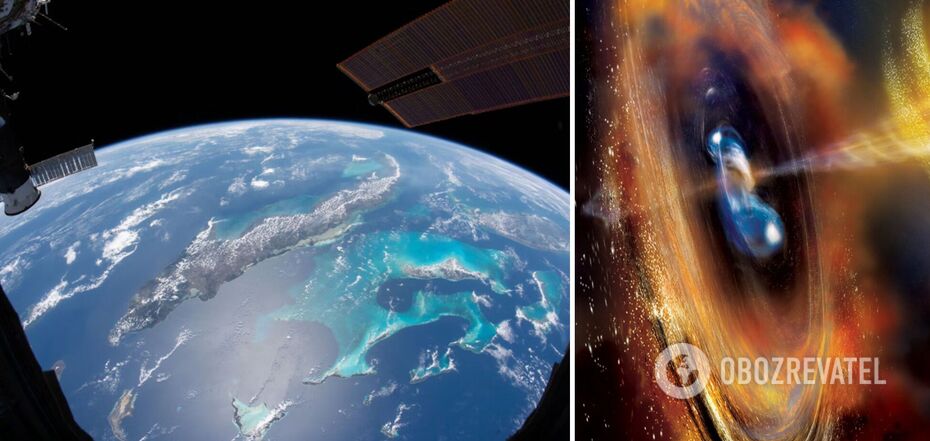News
Scientists discover cosmic phenomenon that can completely destroy life on Earth
A collision between two neutron stars in a decaying orbit could trigger a Kilonova explosion that could be devastating for planet Earth. Fortunately, this is only a theory, as scientists believe that out of all 100 billion stars in the Milky Way galaxy, there are only about 10 neutron double stars heading for a collision, and they are all at a safe enough distance for humanity.
The consequences of the neutron star collision were calculated by scientists led by physicist Hayley Perkins from the University of Illinois at Urbana-Champaign. The results of the study have been published on the arXiv preprint site and are awaiting peer review by the scientific community (to see what the Kilonova explosion looks like in the video, scroll down to the end of the news).
The collision of two neutron stars is a relatively rare event. To date, scientists have detected only a few Kilonova explosions resulting from such a collision, and none of them in our Milky Way galaxy.
But, as the Perkins team calculated, if such an explosion were to occur in our galaxy, it could be very deadly. However, under certain conditions.
The researchers' conclusions suggest that the greatest danger is posed by cosmic rays resulting from the explosion. They will be destructive at a distance of up to 35 lightyears.
The result will also be devastating for those who find themselves in the path of the gamma-ray burst of the Kilonova, which can be destructive at a distance of up to 300 light years. However, unlike cosmic rays, the threat will arise only if the planet is directly in the path of the gamma-ray burst.
According to Science Alert, binary neutron star collisions - based on a scant number of observations - have several components
- A short burst of gamma-ray radiation emitted by a pair of narrow jets on either side of the colliding stars;
- gamma-ray cocoons around each jet, which are formed when the jet tries to break through the material that was spewed out during the collision.
As such jets penetrate the interstellar medium, they emit powerful X-rays known as X-ray afterglows. As the situation evolves over years and centuries, a bubble of cosmic rays spreads out into space from the center of the collision.
Perkins and her team found that any living thing within a narrow range of the jet at a distance of 297 light-years would likely die due to the powerful gamma rays. Outside this narrow range, however, it is somewhat safer. To be exposed to gamma radiation from the cocoon structures, you need to be up to 13 light-years away.
Both of these threats are short-lived, but if they hit the Earth, they would destroy the planet's stratospheric ozone, which would take about four years to recover.
X-ray radiation would be much more dangerous, as the afterglow would last much longer than gamma radiation. But it will operate at a distance of up to 16 light years.
The most dangerous was the long-lasting bubble of cosmic rays, which is destructive at a distance of up to 35 light years from the source. It is capable of destroying the Earth's ozone layer, making the planet vulnerable and bombarding it with radiation for thousands of years. Such an impact would result in mass extinction.
The researchers point out that fortunately, humanity is not in danger of such an explosion.
Earlier, OBOZ.UA told about whether people will be able to survive the collision of the Milky Way with the Andromeda Galaxy.
Subscribe to OBOZ.UA channels in Telegram and Viber to keep up with the latest events.



























